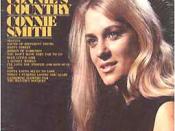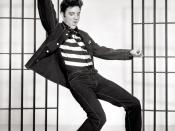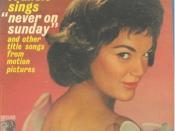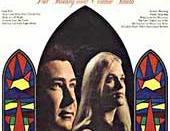The Evils of Sexuality and Rock "ÃÂn' Roll In the short story, "Where Are You Going, Where Have You Been,"ÃÂ Joyce Carol Oates criticizes teenagers reliance of rock n' roll music and emphasizes the dangers of sexual promiscuity through the life of the main character Connie.
In the story, rock'n'roll is a continuous presence in Connie's life. At the drive-in, she feels the background music is something to depend on, and on Sunday afternoon with no drive-in and no boys around, the music gives Connie joy. Because of its consistency, Oates is careful to emphasize its absences. Leaving the shopping plaza in her friend's father's car Connie is not too far away from the drive-in to hear the music. Like most rebellious teenagers, Connie finds her escape from the banality of every day life in music, by " turning on the radio to drown out the quiet."ÃÂ The music's steadiness in Connie's life is vital to the character Arnold Friend; there are the "singsong way he talks"ÃÂ and the manner in which his words remind Connie of last year's song lyrics.
Just as music had been ever present in the background, Ellie Oscar's transistor radio provides a soundtrack for Friend's seductive scene at the house with Connie. Drawing upon Elvis' evil image among the older generation in the 60's, Oates describes Friend in the same way and uses music to foreshadow Connie's dark end.
Oate's takes aim of the consequences of teenage sexual promiscuity. Connie's natural instinct to flirt becomes a negative trait. She thinks she can use her looks and her sexuality to get herself out of bad situations. Connie is so naÃÂïve that she does not have the understanding to realize Friend's manipulation to her mind and body, therefore as readers we come to the conclusion she will not make it out of her house alive.
The whole story has inferences of sexuality leading to Connie's demise. Friend's determination and firmness that he is Connie's lover to his explanation of what their first sexual experience will be like this whole story is full of sexual references. Friend knows that Connie dreams of romance and love. Friend's determination and firmness that he is Connie's lover plays on her emotions to make her do what he wants. He flatters her and makes her want to know "what real love is like."ÃÂ By the time Friend asks her "what else is there for a girl like you but to be sweet and pretty and give in?"ÃÂ Connie feels like she can do nothing but comply she trusts her lacking disposition to the end, and she is led to ruin. Connie is accustomed to boys and sees Friend as just another boy whom she knows how to handle. Even though the story is left with no resolution, we suspect by the tone of the story and the force with which Friend takes over Connie, that she will eventually be raped and murdered. At the end of the story Connie says, "I'm not going to see my mother again or sleep in my bed again."ÃÂ Although the story has a very dark ending, it also sets in a sense of reality. Joyce Carol Oates has communicated her emphasis of the dangers of sexual promiscuity and the reliance on corrupting rock'n'roll music. We all have sympathy for Connie in the fact that she cannot identify what is going to happen to her. The fact that anywhere, anytime, danger can come around. We can now see the greater meaning of the saying "it can happen to anyone."ÃÂ





